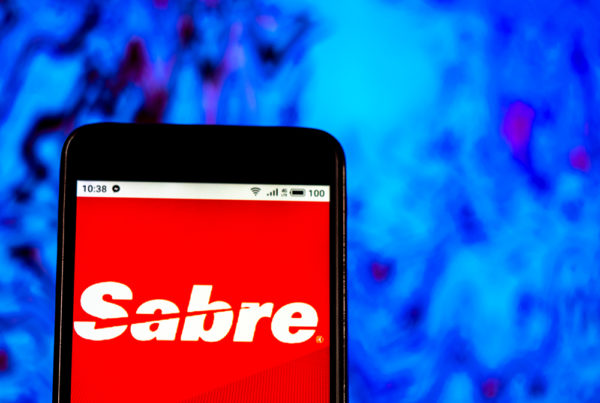Nicholas Barbon had the right idea at the right time. He’s the English economist, physician and financial speculator who started a building-insurance business a few years after the Great Fire of London destroyed more than 13,000 houses and other structures in 1666.
The first forms of insurance are believed to have been drawn up around 1750 BC, when merchants paid lenders a little extra for loan forgiveness if their merchandise was stolen. But it was Barbon’s “Insurance Office for Houses” – which offered fire insurance for up to 5,000 London households – that is regarded as the model for the modern insurance industry.
Last year, net premiums written for property/casualty and life/annuity insurance amounted to more than $1.3 trillion, up by more than a third over the prior decade, according to the Insurance Information Institute. In the article below, contributor Jimmy Butts gives his take on how best to get a piece of that action.
— Bob Bogda, Editor
P.S. Like what you see? Don’t like what you see? Let me know.

Most of you are likely not familiar with Shelby Davis. But he’s a stock market legend, one of the few who has successfully followed the blueprint of investing greats Warren Buffett and Ben Graham.
In 1947, at the age of 38, Davis began investing in earnest with $50,000. Over the course of his investing career, he amassed a $900 million fortune.
Davis didn’t take risky bets using options, derivatives, or futures contracts. In fact, he amassed his fortune by investing in only a handful of stocks that were all in the same industry (so much for diversification).
Davis noticed that Buffett built his company, Berkshire Hathaway, by using insurance companies as his foundation (namely Geico).
Davis followed suit. He scooped up insurance companies when they were trading for cheap and watched the returns stack up.
Today, we have a chance to snag shares in some wonderful insurance companies that are trading for cheap…
Insurance: An Essential Service
The year 2020 has been a mess, rife with pandemic deaths, street violence, devastating wildfires, and hurricanes. The widespread damage has prompted most investors to shun the insurance industry. After all, insurance companies are forking over claims left and right these days. But therein lies an opportunity.
While the major indices and most sectors have recovered nicely from the initial coronavirus fallout in March, the insurance industry is still more than 24% off its February highs.
There’s a lot of uncertainty surrounding the industry as investors try to figure out how much pain will be inflicted on these companies as they pay claims for lost lives and damaged property.
Insurance companies in effect bet that these sorts of events won’t happen, and nobody could have guessed that a virus would suddenly wreak havoc. Insurers have clearly lost this wager now they’re paying up.
Insurance is an “essential service,” like rent or electricity. You have to have it. So, you pay the bill. That translates into terrific cash flow for the insurance companies that cash your checks.
You see, while most companies must pay for capital, insurance companies receive free capital in the form of premiums that they can profitably invest. And they get to keep the profits from those investments.
SPONSORSHIP
A free retirement strategy you MUST see
Want to learn how to retire rich with just 3 stocks?
Get the names and tickers of the 3 stocks you need to get started.
The best time to invest in these companies is during a disaster. Sure, some poorly run insurers will go out of business. But the elimination of competition is great for the companies that survive because they can charge higher rates in the period that follows.
In coming months, we will likely see a surge in pandemic business insurance or a bump in business-interruption insurance.
These aren’t the first pandemics or catastrophes that insurance companies have faced. And they won’t be the last. But every time they arise, shares of insurance companies dip, and then the good ones go on to gobble up more market share and produce outsized returns. We’ve seen this play out over and over again throughout the years.
Just take a look at American Financial Group (AFG) after Hurricane Sandy produced more than $70 billion in damages eight years ago…
How To Find A Good Insurance Stock
One of the keys to a good insurance company is its ability to generate an underwriting profit. These are the companies that aren’t afraid to turn business away if the risks outweigh the potential profit. Some insurance companies will insure anything just to keep premiums coming in the door. We don’t want to invest in those.
Fortunately, there’s an easy metric that tells us if a company is operating at a profit or loss, and that’s the firm’s “combined ratio.” The combined ratio measures insurance profitability — expenses and claim losses divided by premiums collected. A combined ratio below 100 shows that a company is generating an underwriting profit. Above 100 means it’s operating at a loss.
Next, as with many financial institutions, a key metric for insurance companies is the firm’s book value. This is the amount the company is worth if it were liquidated. The book value is often compared to the stock’s current market price, or P/BV.
Every industry and company will have a wide variety of P/BV levels. Some companies consistently trade at a premium to their book value, while others consistently trade at a discount to their book value. Typically, it’s best to compare a company’s P/BV to its historical range to gain perspective.
One Of My Favorite Insurance Stocks… Plus, Two ‘Insurance-Tech’ Plays To Keep An Eye On
There are a number of wonderful P&C insurers out there, but a good place to start is with American Financial Group (NYSE: AFG).
American Financial Group’s main business is property & casualty lines of insurance, with a focus on specialized commercial products like agriculture and farming insurance, transportation, aviation, construction, and energy. The company also has a stout annuity business.
Last year, AFG produced more than $8.2 billion in revenue ($5.2 billion from insurance premiums and $2 billion from its annuity business. The remainder came from other business segments and realized gains on its investment portfolio).
AFG sports a combined ratio of just 62.2 (remember, a combined ratio below 100 indicates profitability) and has a $50 billion investment portfolio that consistently produces returns that outperform industry benchmarks. And right now, it trades at a P/BV of just 0.9, which is below its five-year historical average of 1.5.
If you’re in the market for more speculative tech plays in the industry, consider insurance-software firm Guidewire Software (NYSE: GWRE), which provides software products for insurers worldwide.
Then there’s the latest entrant, Lemonade (NYSE: LMND), which debuted as a publicly traded company in July. Lemonade simplifies buying home and renters insurance by using an online bot. The insurance fintech initially spiked 138% to a high of $96.51 and has since gradually drifted into the $50 range. More selling pressure could come later this year when the “lock-up” period on restricted stock units (RSUs) begins to expire.
The newly public company has a tiered lock-up period for when its executive officers, directors, and other major shareholders can sell their shares, or RSUs, on the open market.
The RSUs expire in their entirety in six months, but one-third of insider shares — roughly 15 million shares — could be available for executives to sell one day following the release of the company’s third-quarter earnings. That date has yet to be officially announced, but it is tentatively scheduled for the beginning of December.
Right now, Lemonade isn’t profitable, but is trying to disrupt the stodgy insurance industry, and could be a good long-term growth play once the dust settles from its IPO.
SPONSORSHIP
America’s #1 Stock Picker Reveals Next 1,000% Winner (free)
He’s found 40 1,000% or higher stock market winners. He beat 650 of the world’s most famous investors (including Bill Ackman and David Einhorn) in a trading contest. And today, he’s revealing the critical top trend to watch and his next potential 1,000% winner for free, right here. No credit card, email address, or subscription required.








